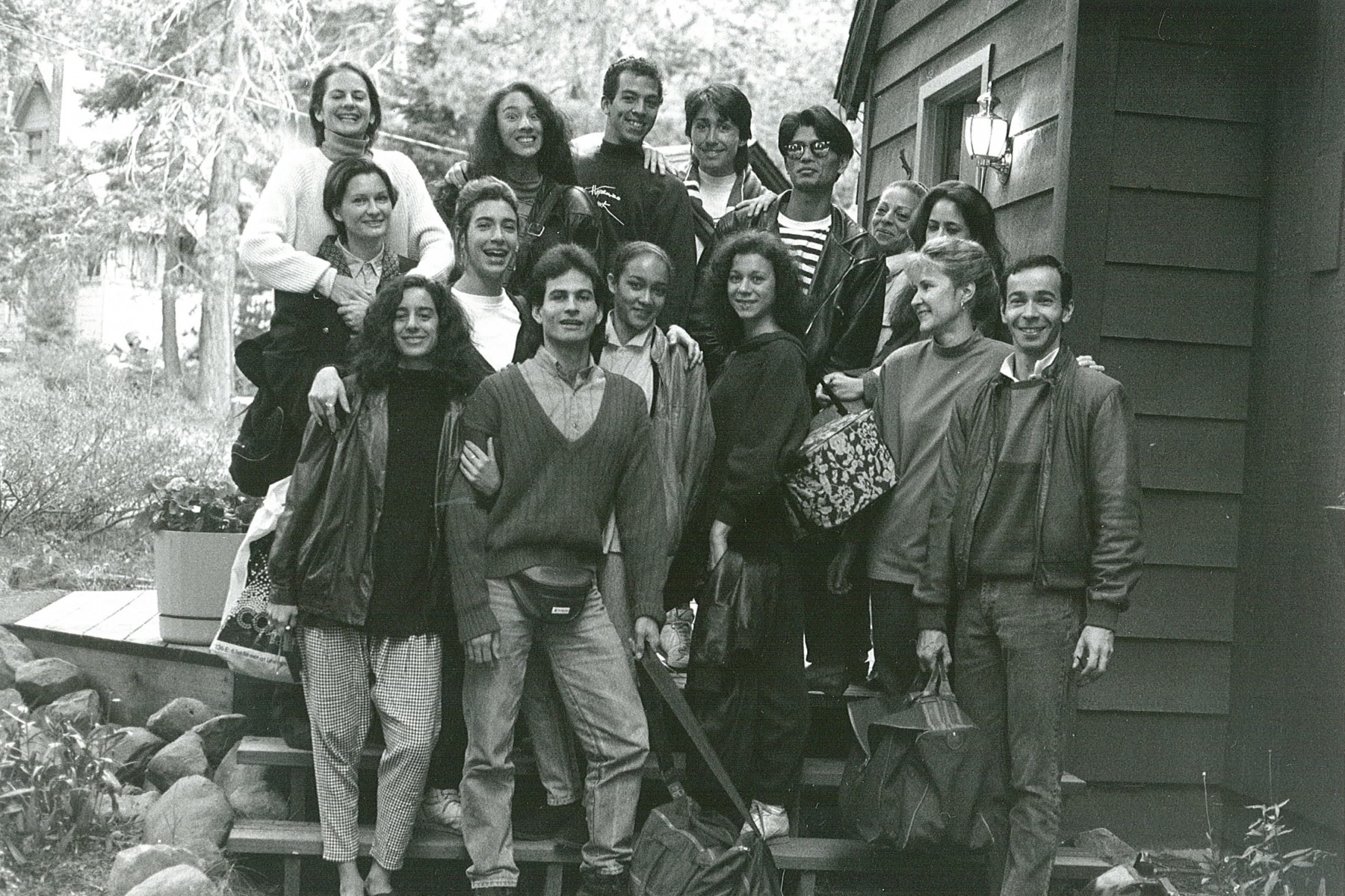Dolores Rivera
What is your name and where are you from?
My name is Dolores Garcia, but when I was part of the Company, my name was Dolores Rivera. I was raised in Queens and am a founding member of Ballet Hispánico.
When did you first start dancing with Ballet Hispánico? What was it like at that time?
When Lola Bravo retired in 1963, the youthful and beautiful Tina Ramirez (founder of Ballet Hispánico) took over the dance school in the CBS Building on 34th Street in Manhattan. We danced and twirled to the melodious dances of Spain in our colorful, ruffled skirts. It was truly an education to learn dances from the different provinces of Spain. Some dances were folk-like and others were classical in origin from the Courts of the Kings and Queens of Spain. Some were fiery and passionate – FLAMENCO – I had finally found my true passion and purpose in life! I was drawn in by the excitement, passion and danger of loving too deeply in life and the emotions that were stirred up.
By the time I was 12 years old (1966), I was budding into a voluptuous young lady. By this time, Tina’s students (called the Tina Ramirez Dancers) were already pretty seasoned performers and able to perform at the drop of a hat anywhere needed.
I don’t ever remember being asked to perform, it’s just something we were expected to do. Performing was fun, exciting and gave us great discipline and stamina that we would carry with us for the rest of our lives. We did a lot of performances all over the tri-state area, including the New York World’s Fair in 1964 and 1965, and we performed at least 20 times in the New York State Pavilion.
When I turned 15 (1970), Tina Ramirez formed Ballet Hispánico of New York. She and her staff worked very diligently to get funding from many sources to start the company for teens and tweens. Tina selected certain pupils from her school who showed the most promise in performing and dedication to the arts. It was a great honor to be selected, and we worked very hard.
Where did you perform with Ballet Hispánico?
Some of the earliest shows were at state institutions – a few that stand out in my mind were mental institutions in New York State, including Bellevue in Manhattan, Pilgrim State on Long Island and Willowbrook in Staten Island. Many of our audiences were in wheelchairs and were hardly aware of what we were doing in front of them. It gave us a sense gratitude to know how fortunate we were. We also performed at the Queens House of Detention, the Tombs in lower Manhattan, and the infamous Sing Sing in upstate New York. At the Tombs, we spent three days dancing for the inmates in the chapel area. We did not have mirrors, just metal reflective sheets to put our makeup on.
What was it like performing with the Company? Were you able to work with any notable choreographers?
We were an all female Company at first, but eventually Tina started recruiting male dancers who were more modern and ballet-oriented. The company’s repertoire eventually expanded to dances from other countries, like Haiti, Puerto Rico, Mexico and even a modern jazz dance. This was accelerated by the union of Ballet Hispánico with the Neighborhood Youth Corps who paid us summer wages to take dance classes in Afro-Cuban, ballet, Spanish dance, and more.
We rehearsed all summer for a two-week engagement of touring and dancing of the city’s neighborhoods. Mayor Lindsay’s administration was instrumental in having us “calm down the streets” during a time when riots were common in the early 1970’s. We performed on a mobile stage in every “barrio” within the five boroughs of New York City. The last show every year was at Central Park’s Band Shell.
As the years went on, Tina was able to get commissions for various larger, more established dance companies such as Ballet Folklorico de Mexico, Alvin Ailey, and others. Jose Coronado from the Ballet Folklorico choreographed Vera Cruz (a folk dance), and Julie Arenal, most famous for her choreography for the Broadway musical Hair, choreographed a ballet for us depicting “Dia De Los Muertos” (a Mexican holiday celebrating Day of the Dead).
Tina choreographed Pacholi for us, which was a “bomba” from Puerto Rico in which we also sang. The opening act to Pacholi was a dance called Vijigante, which is a demon-like spirit from the Island showing the African influence in the Caribbean. We also had a Haitian dance choreographed by Charles Moore, which dealt with all the emotions of love – flirtation, jealousy, possessiveness, combat and finally death – all in the name of love.
Spanish Dance still remained the backbone of the Company, but this was slowly changing as the Company took on a more modern dance base with a Latin influence. By the time I was in college (Queensborough Community College) the six women of the Company were touring the country doing shows in schools, colleges and community centers. Our purpose was educating the country on Hispanic culture through song and dance. We were a family, living and working together. I could not ask for a better family. We loved and fought like brothers and sisters.
What did you learn from Tina? Did she have any sayings you remember specifically?
The saying “The show must go on” is so true – no matter what is happening in your life at the time Tina would say “YOU GET OUT THERE AND YOU SMILE!” Looking back, I can appreciate the courage, strength and determination of this 4’10” powerhouse of a woman (truly a woman before her time) who was willing to take on and “raise” everyone else’s children as if they were her own. Tina had no children – she had us. She was a tremendous influence in forming and developing traits such as stamina. Whatever twists and turns our lives take, we can still draw on those strengths from our experiences with her.
What else would you like to share about your time with Ballet Hispánico?
Ballet Hispánico provided me the opportunity to participate in a CCNY Work-Study program. I was paid a stipend to work at the studio teaching Flamenco classes to Tina’s students. My students ranged in ages 8 to 80. A large portion of my classes were occupied by the junior Company dancers, which consisted of pre-teens. These were the students Tina was preparing to eventually move up to the Company.
In 1975, at 20 years of age, I graduated college, fell in love and did not want be on tour any more. Ballet Hispánico and Tina Ramirez will always have a piece of my heart – BH was a part of my life I will never forget, never regret. My time there made me a stronger human being, able to withstand anything life threw my way. Thank you Tina for my Ballet Hispánico family. I love you and all those who were a part of it.





















